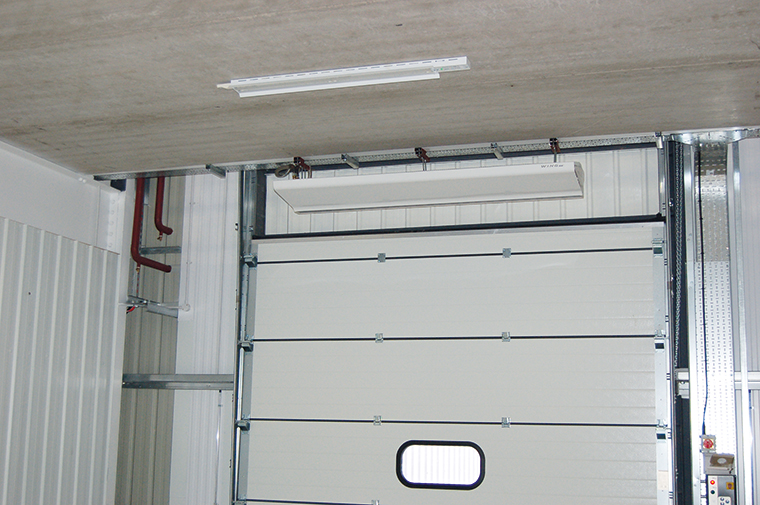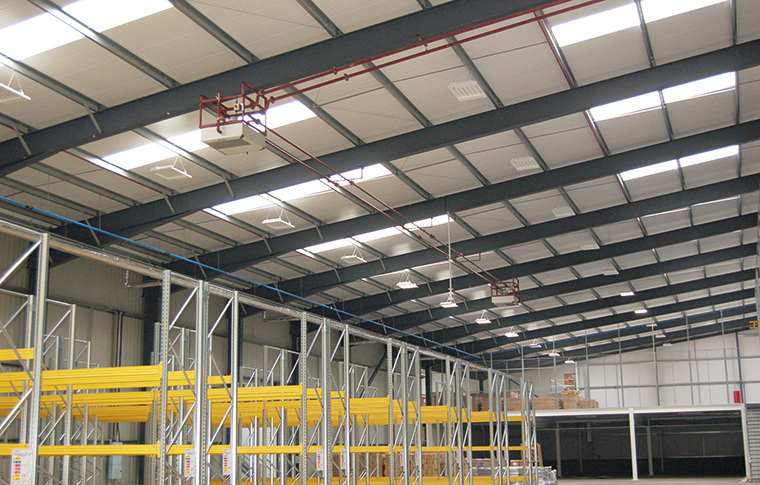Chris Franklin, managing director of Ranheat Engineering, one of the UK’s leading manufacturers of wood-waste burning equipment, continues his series of articles exclusively for Furniture & Joinery Production.
.
Many potential customers are unaware as to what is needed to install a wood fired heating system. They are also unaware as to how little wood-waste is needed to effectively heat a factory.
In general, within the woodworking industry, the heat load is divided into three main factors. The obvious one is transmission losses through the fabric of the building this is heat lost through the roof walls and floor of the factory unit itself.
Modern buildings have low transmission losses older buildings were not so well insulated. The second form of heat load is infiltration losses. In simple terms how many doors are left open all day for loading finished goods for delivery or receiving materials from suppliers. This is normally referred to as ‘air changes’.

An air curtain over each loading door reduces heat loss and will help reduce the energy required to heat a building
The third, and very relevant heat loss in the woodworking industry, is extraction losses – these are from the dust extraction system and spray booths.
Some dust extraction companies supply dust extraction filters with return air to the building. Extraction losses from spray facilities cannot be returned.
So how much energy does a factory use? As a rule of thumb, a 20,000ft2 factory will need 300kW, a 10,000ft2 factory, 150 kW.
It is generally predicted by OFGEM that the energy used per heating season is the power of the heater in kW multiplied by 1314.
So, 150 kW heater 150 x 1314 = 197,100 kW hours or around 61 tonnes per heating season. If we take the heating season to be 32 weeks, this needs 1.9 tonnes per week. Equivalent gas usage at 25p per kW hour would be £49,275 per year.

Not all areas need air movement, or indeed, want air movement, so radiant panels can be used
If we do the same calculation with a 300kW heater and a 20,000ft2 factory 122 tonnes per year replaces a gas bill of almost £100,000. and during the heating season needs 3.8 tonnes per week.
If we take an example of a site with dust extraction and off-cuts available filling a 12m3 skip every month with extracted material and producing a 12m3 skip of off-cuts per week.
If we assume that the density of the extracted material is 500kg per m3 and the offcuts is 250kg per m3. Then this site would have 1.5 tonnes per week of extracted material and 1.5 tonnes of off-cuts. If the off cuts are granulated, then they can be mixed with the extracted material and the site has three tonnes per week available as fuel all of the year round.
With a small amount of storage of the off cuts in the summer the site could be self-sufficient in heating. During the summer months the waste produced can be efficiently burned and the heat produced released to atmosphere.

Radiant panels can be used in veneer shops or packing areas where air movement would be a problem
If we consider a woodworking factory with a spray facility heating to the spray room is still required even in summer but at a much lower rate. In winter the extraction losses are often more than the transmission losses.
The design of the heating system can effectively reduce the energy needed to heat a factory if we can cut down on heat lost from the building. An example of this would be an air curtain over each loading door. The use of high-level unit heaters these take the hottest air and heat it and blow it down to floor level so as well as acting as heaters they act as heat recovery units.
Unit heaters and door curtains can be thermostatically controlled, or the door curtains can switch on when the door is raised, automatically.
High level unit heaters can be controlled in zones allowing storage areas to be held at lower temperatures than work areas.
For more information or a detailed site survey, contact Chris Franklin at Ranheat Engineering.
01604 750005
[email protected]
www.ranheat.com









